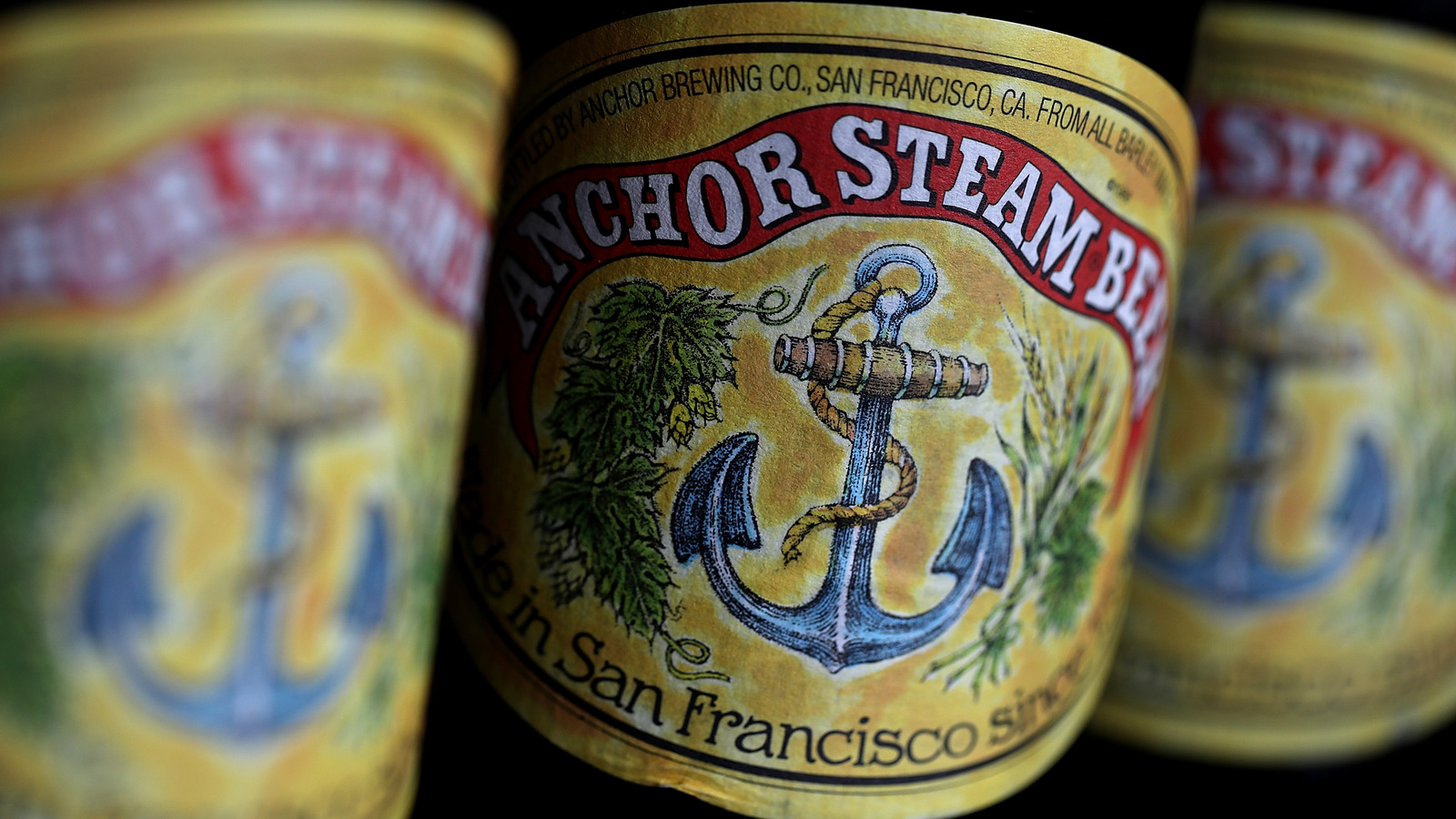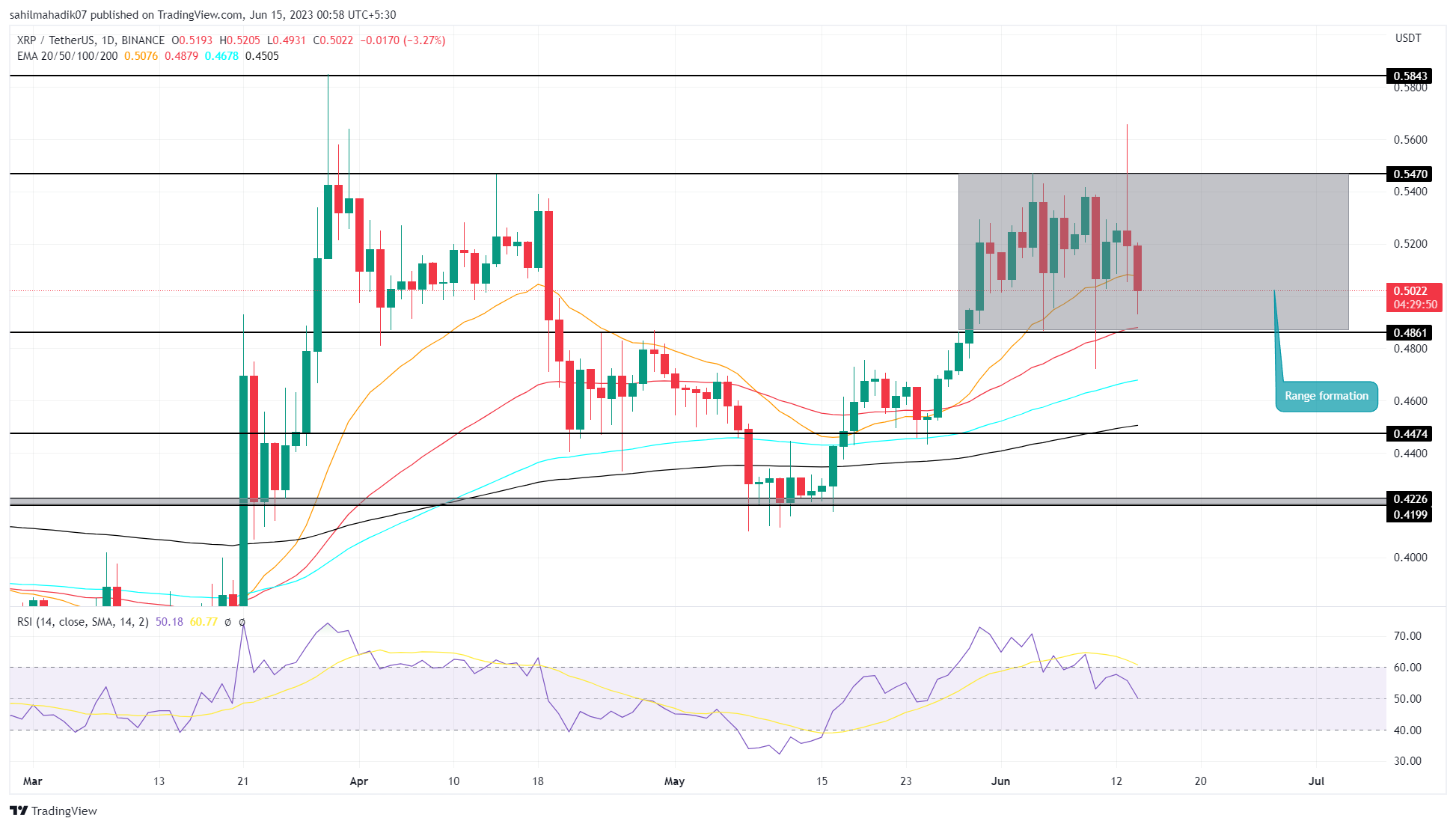The Closure Of Anchor Brewing Company: What Went Wrong?

Table of Contents
The Shifting Sands of the Craft Beer Market
The craft beer market's explosive growth over the past few decades has created a fiercely competitive environment. This rapid expansion, while initially beneficial, ultimately led to market saturation and significant challenges for even the most established players like Anchor Brewing.
Increased Competition
The rise of countless microbreweries, brewpubs, and regional craft breweries has created a battle for shelf space, tap handles, and, most importantly, consumer attention.
- New breweries capturing market share: Smaller, innovative breweries with unique offerings have successfully carved out niches, often at the expense of established brands that failed to adapt.
- Acquisitions by larger breweries: The consolidation of the craft beer industry, with larger companies acquiring smaller breweries, further intensified competition and altered the market dynamics. This increased the pressure on independent breweries like Anchor to compete with the marketing power and distribution networks of these larger entities.
- Increased pricing pressure: The sheer number of breweries competing for the same consumer dollars has resulted in increased pricing pressure, making it difficult for some breweries to maintain profitability.
Changing Consumer Preferences
Consumer tastes in beer are constantly evolving. The rise of specific craft beer styles, particularly trendy sub-genres, has presented a significant challenge for breweries struggling to keep pace.
- The IPA explosion and beyond: The immense popularity of India Pale Ales (IPAs) and its many variations, along with the growing appeal of sour beers, lagers, and other niche styles, has diversified the market. Breweries that failed to adapt to these shifts and maintain an innovative approach found themselves left behind.
- Demand for unique and experimental beers: Consumers are increasingly seeking unique and experimental brews, pushing breweries to innovate constantly and offer a wide variety of offerings to stay relevant.
- Anchor's perceived stagnation in innovation: While Anchor had a rich history and loyal following, some critics argued that the brewery failed to keep up with the pace of innovation seen in other craft breweries, leading to a decline in appeal among younger consumers.
Distribution Challenges
Maintaining a robust distribution network is crucial for success in the craft beer industry. However, the increasingly competitive landscape has made distribution a significant hurdle for many breweries.
- High distribution costs: The costs associated with getting beer from the brewery to the consumer (transportation, warehousing, etc.) have risen substantially, impacting profitability margins.
- Competition for tap handles: Securing tap space in bars and restaurants is a constant battle, especially in saturated markets, making it difficult for breweries to gain visibility and reach their target audience.
- Changing retail landscapes: The rise of direct-to-consumer models (e.g., brewery taprooms, online sales) has altered the traditional distribution landscape, creating both opportunities and challenges for breweries of all sizes.
Internal Factors Contributing to Anchor's Decline
While external factors played a significant role, internal decisions and operational issues also contributed to Anchor Brewing's struggles.
Management and Ownership Changes
Several changes in ownership and management over the years potentially impacted Anchor's overall strategy and direction.
- Impact of ownership changes: Different owners may bring varying visions and priorities, potentially leading to inconsistencies in the brewery’s strategic direction. A lack of clear, consistent leadership can affect a company's trajectory significantly.
- Potential conflicts of interest: Internal conflicts or disagreements among stakeholders could have negatively impacted decision-making processes and overall efficiency.
- Shifts in company vision: A changing corporate vision, particularly one that did not align with consumer preferences or market trends, could have contributed to the company's decline.
Branding and Marketing Strategies
The effectiveness of Anchor's branding and marketing efforts in a rapidly evolving market is another crucial factor to consider.
- Brand perception: Anchor’s brand image might have become outdated or less appealing to younger generations of beer drinkers.
- Marketing campaign effectiveness: The brewery's marketing strategy might have been ineffective at reaching its target audience in a saturated market.
- Social media presence and engagement: A weak or outdated social media presence could have limited the brewery's reach and ability to connect with potential customers.
Production and Quality Control
Maintaining consistent quality and production efficiency is paramount in the craft beer industry. Potential issues in these areas could have damaged Anchor's reputation.
- Reports of quality inconsistencies: While anecdotal, reports of inconsistent quality in certain batches could have negatively impacted consumer trust and loyalty.
- Changes in brewing processes: Alterations in brewing processes, perhaps in an attempt to increase efficiency or reduce costs, could have inadvertently negatively affected the taste or consistency of the beer.
- Impact on brand reputation: Any perceived decline in quality would inevitably damage the brewery's reputation and lead to a loss of market share.
External Factors Impacting Anchor Brewing
Beyond internal challenges, several external factors beyond Anchor's direct control significantly impacted its operations.
Economic Downturns and Inflation
Economic fluctuations and inflation have significantly impacted consumer spending habits and the craft beer industry.
- Price increases impacting sales: Rising costs of ingredients, packaging, and distribution forced many breweries to raise prices, potentially leading to a decline in sales, especially among price-sensitive consumers.
- Consumer reactions to higher prices: In a competitive market, consumers are more likely to switch to cheaper alternatives if prices increase, impacting market share.
- Decreased disposable income: Economic downturns typically lead to reduced disposable income, forcing consumers to cut back on discretionary spending, including premium craft beers.
The Impact of the Pandemic
The COVID-19 pandemic had a profound impact on the hospitality industry, including breweries.
- On-premise vs. off-premise sales: The closure of bars and restaurants significantly reduced on-premise sales for many breweries, disproportionately affecting breweries heavily reliant on draft beer sales.
- Challenges related to supply chain disruptions: Supply chain disruptions during the pandemic led to increased costs and shortages of raw materials, impacting production and profitability.
- Impact on tourism and local sales: Restrictions on travel and social gatherings negatively impacted tourism, hurting breweries that relied on tourists for a significant portion of their sales.
Conclusion
The closure of Anchor Brewing Company serves as a cautionary tale for the craft beer industry. The reasons for its demise are multifaceted, stemming from a confluence of intense market competition, evolving consumer preferences, internal management challenges, and significant external pressures, including economic downturns and the impact of the COVID-19 pandemic. Learning from Anchor’s experience is crucial for both established breweries and newcomers navigating the increasingly challenging craft beer landscape. To stay informed about the latest trends and challenges, continue to follow industry news and analysis. Understanding the complexities of the craft beer market is essential for long-term survival and growth, avoiding the fate of Anchor Brewing.

Featured Posts
-
 Kht Shhn Jdyd Yrbt Byn Alsyn Walmghrb Walbrazyl Mbadrt Laram
May 07, 2025
Kht Shhn Jdyd Yrbt Byn Alsyn Walmghrb Walbrazyl Mbadrt Laram
May 07, 2025 -
 Is Xrps 400 Rise A Buying Opportunity Analysis And Predictions
May 07, 2025
Is Xrps 400 Rise A Buying Opportunity Analysis And Predictions
May 07, 2025 -
 Why Middle Managers Are Essential For Company Success
May 07, 2025
Why Middle Managers Are Essential For Company Success
May 07, 2025 -
 Nba Lyderiai Ir Istorinis Klubo Rekordo Pakartojimas
May 07, 2025
Nba Lyderiai Ir Istorinis Klubo Rekordo Pakartojimas
May 07, 2025 -
 Isabela Merced The Last Of Us 8 Filmes Que Voce Precisa Ver
May 07, 2025
Isabela Merced The Last Of Us 8 Filmes Que Voce Precisa Ver
May 07, 2025
Latest Posts
-
 The Long Walk 2023 Trailer Impressions And Expectations
May 08, 2025
The Long Walk 2023 Trailer Impressions And Expectations
May 08, 2025 -
 Stephen Kings The Long Walk Movie Adaptation A Terrific First Look
May 08, 2025
Stephen Kings The Long Walk Movie Adaptation A Terrific First Look
May 08, 2025 -
 Stephen Kings The Long Walk Trailer Reaction And Adaptation Analysis
May 08, 2025
Stephen Kings The Long Walk Trailer Reaction And Adaptation Analysis
May 08, 2025 -
 The Long Walk Trailer Flabbergasting Adaptation Of Stephen Kings Novel
May 08, 2025
The Long Walk Trailer Flabbergasting Adaptation Of Stephen Kings Novel
May 08, 2025 -
 The Long Walk Trailer Exploring The Intense Dystopian World
May 08, 2025
The Long Walk Trailer Exploring The Intense Dystopian World
May 08, 2025
